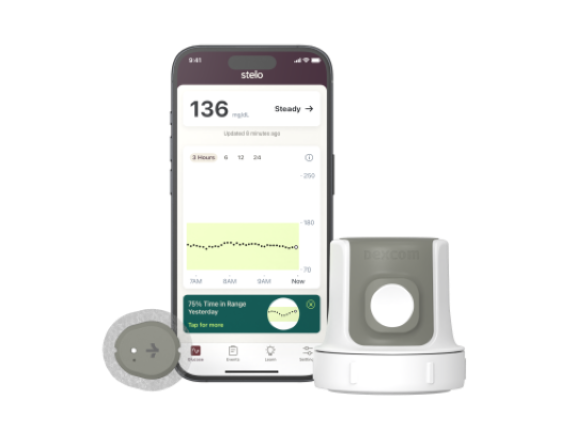Glucose Biosensing: Powerful, Personalized Insights
Information provided by Dexcom
The adoption of continuous glucose monitoring (CGM), also known as glucose biosensing, has a far-reaching impact. Individuals living with type 2 diabetes who utilize CGM technology report a greater understanding of diabetes, leading to positive behavior changes. Glucose biosensing provides real-time insights into glucose levels, allowing users to make informed lifestyle decisions by making the invisible visible.1
Early monitoring, visibility and intensive control of glucose values have significant long-term benefits, frequently referred to as the legacy effect or metabolic memory. When compared with individuals whose A1C levels are less than 6.5% in the first year after type 2 diabetes diagnosis, those with A1C values that exceed 6.5% have a 20% greater risk for microvascular and macrovascular events.2 Immediate and intensive treatment for individuals newly diagnosed with type 2 diabetes is crucial to abate long-term risks that are associated with complications and mortality.
Early introduction and use of glucose biosensors can assess the response to treatment and promote the intensification of therapy as needed.3 Glucose biosensing allows the user to engage with their glucose health and be empowered to take responsibility for day-to-day lifestyle decisions. Glucose biosensing also prompts the family physician to make well-timed steps to escalate or de-escalate therapy with the goal of safely optimizing glucose levels while minimizing therapeutic inertia.3
Tracking glucose is more accessible than ever before. Stelo, an over-the-counter glucose biosensor, is the first of its kind and is designed to empower adults 18 and older living with prediabetes or type 2 diabetes who are not on insulin. Stelo reveals powerful personalized insights impacting glucose health.4
Join physician and thought leader Thomas Grace, MD, as he presents an insightful discussion titled “Stelo: Personalizing Choices, Revolutionizing Glucose Health.” In this presentation, Dr. Grace reveals the critical importance of glycemic tracking, emphasizing how glucose biosensing can significantly impact glycemic outcomes. During the presentation, the practical application and intricacies of Stelo glucose biosensing will be explored, and the ideal user profile for this breakthrough technology will be identified. Evidence-based examples and practical applications will illustrate how glucose biosensing empowers individuals to achieve and maintain healthy lifestyle behaviors, resulting in improved health outcomes.
STELO IMPORTANT INFORMATION: Consult your healthcare provider before making any medication adjustments based on your sensor readings and do not take any other medical action based on your sensor readings without consulting your healthcare provider. Do not use if you have problematic hypoglycemia. Failure to use Stelo and its components according to the instructions for use provided and to properly consider all indications, contraindications, warnings, and cautions in those instructions for use may result in you missing a severe hypoglycemia (low blood glucose) or hyperglycemia (high blood glucose) occurrence. If your sensor readings are not consistent with your symptoms, a blood glucose meter may be an option as needed and consult your healthcare provider. Seek medical advice and attention when appropriate, including before making any medication adjustments and/or for any medical emergency.
MAT-5827
References
- Clark TL, et al. Diabetes Technol Ther. Published online March 13, 2024. doi: 10.1089/dia.2023.0612.
- Laiteerapong N, et al. Diabetes Care. 2019;42(3):416-426. doi:10.2337/dc17-1144.
- Ajjan RA, et al. Nat Rev Endocrinol. 2024;20(7):426-440. doi:10.1038/s41574-024-00973-1.
- Stelo User Guide
Disclaimer
The posting of sponsored information and content on this page should not be considered an AAFP endorsement or recommendation of the sponsor's products, services, policies, or procedures. The information and opinions expressed on this page are those of the paid sponsors and do not necessarily reflect the view of the AAFP. The AAFP is not responsible for the content of third-party websites linked from this page; moreover, any links on this page to third-party websites where goods or services are advertised are not endorsements or recommendations by the AAFP of the third-party sites, goods, or services.
